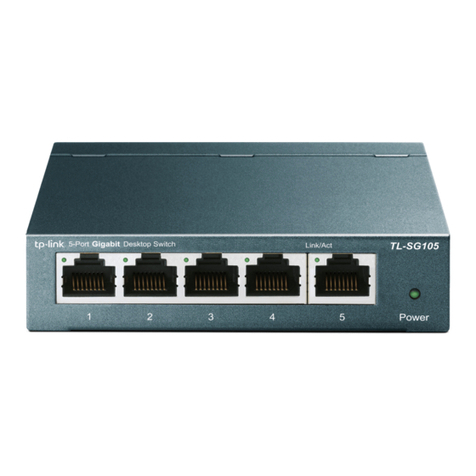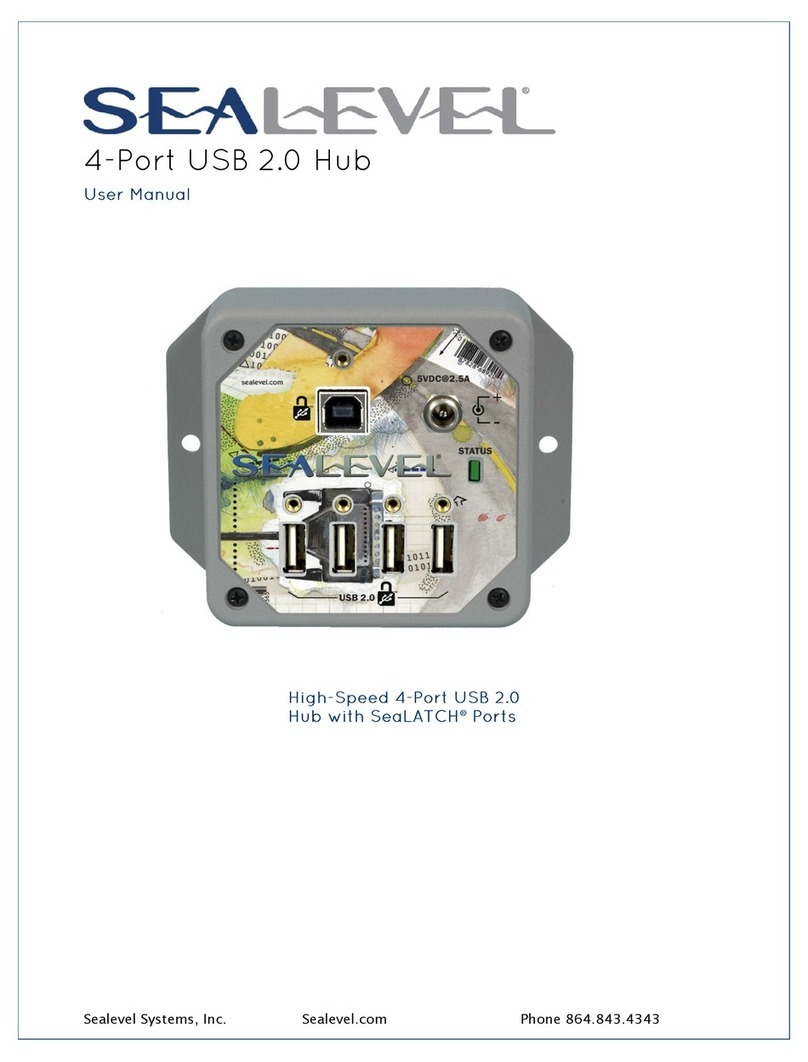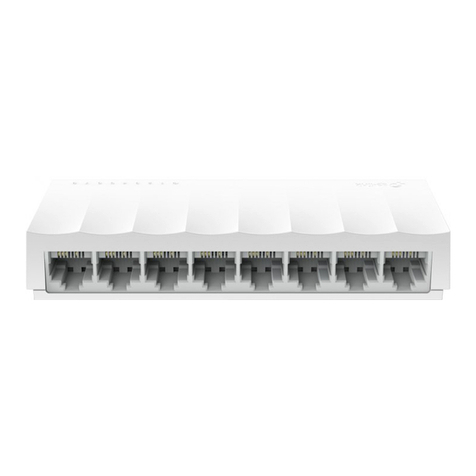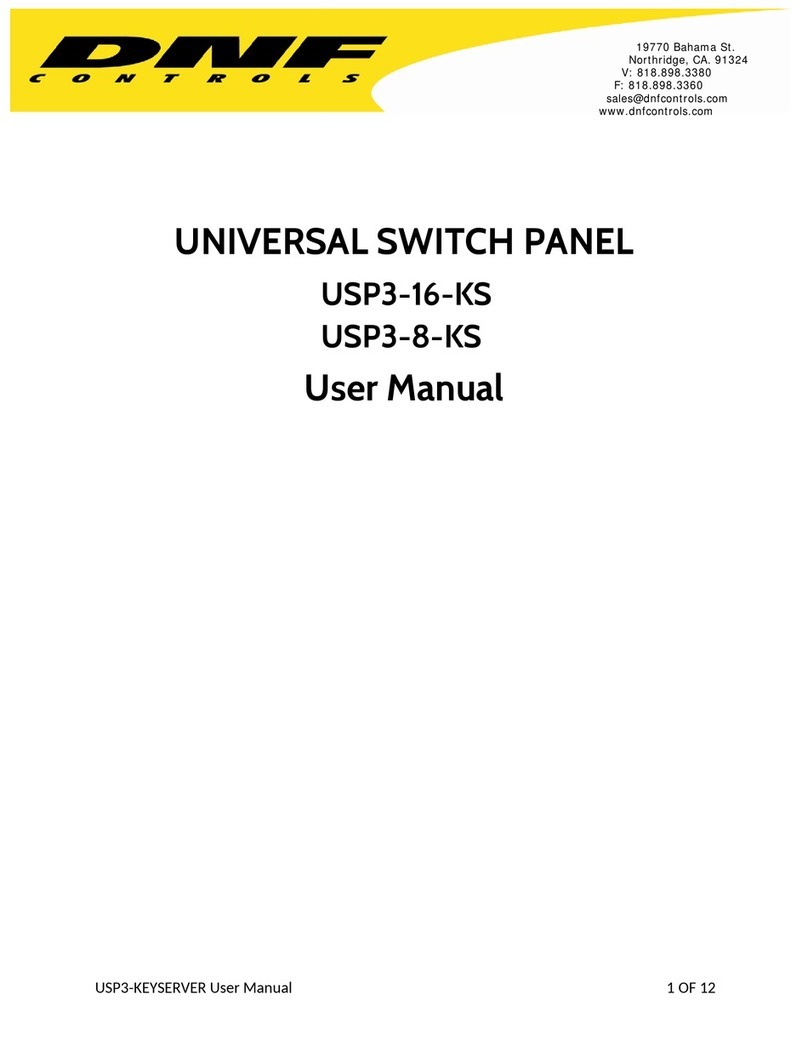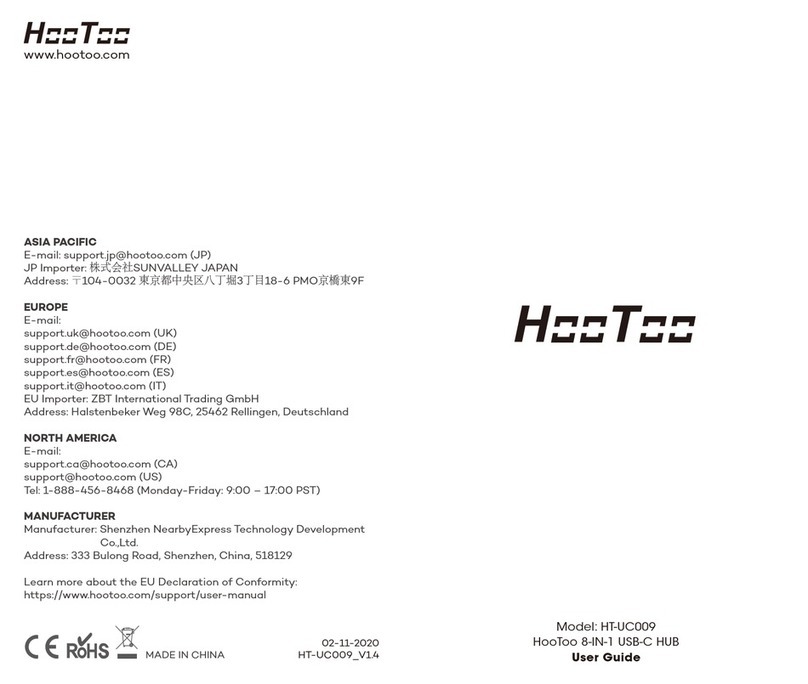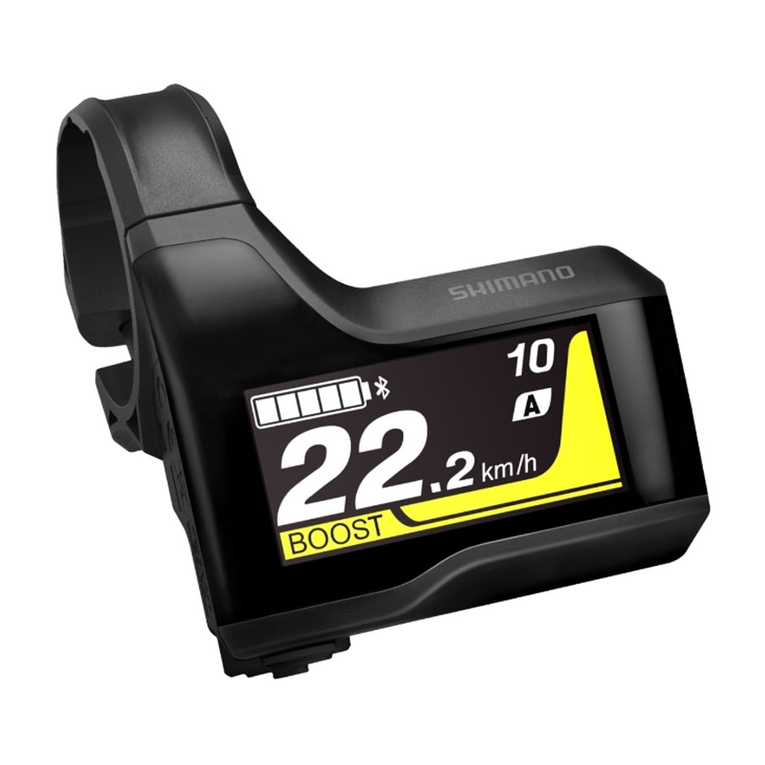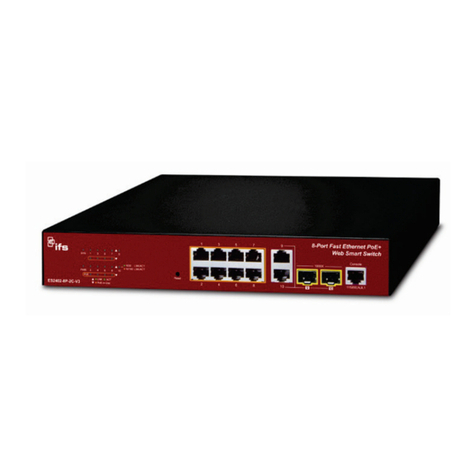Geostuff RS-96/24 User manual

Model
RS-96/24
and
RS-120148
Rollalong Switch
Operating Manual
GEOSTUFF
19623 Via Escuela Drive
Saratoga, California 95070
U.S.A.

Important Note:
Read this page if you read nothing else!
Your adaptor cables may look identical-they are
not! Read the labels on the wires and be sure
that the input and output adaptor cables are con-
nected to the proper socket on the rollalong
switch.
Do not force the switch beyond the mechanical
stop (which is intended to prevent the switch
from making a full revolution).
On models with an adjustable gap, it is possible to
turn the gap adjustment beyond the 180 degree
range marked. If the gap
adjust
is turned a full
revolution, the channel groups
will
become
out
of
sequence.
To re-synchronize the channels, just
connect up a set of geophones and adjust the gap
until there are no dead geophones when the gap
is set to zero.
On
RS-120/48
models, do not altempt to turn the
small gap indicator knob. To position the switch,
turn
the
large knob. To
set
the gap, pull up on
the large knob and then turn it unlil the pointer
shows the proper amount of gap.
This switch is manufactured in two versions. In
version 1, the correct switch position is at the
stronger of two stops.
In the other version, the
correct position of the switch is between the
mechanical stops. Feel the clicks and position the
switch between them. Use the noise monitor on
your seismograph lo conlirm the proper switch
position.

1. Introduction
A rollalong switch is a special type of switch used in
Common Depth Point (also known as CDP, or
Common Midpoint, or CMP) seismic surveys. An
array of geophones is placed on the ground before
starting the survey. The number of geophones in the
array is substantially larger than the number of
channels on the seismograph. The rollalong switch
is used to select a group of geophones (usually the
same as the number of channels in the seis-
mograph) from the array on the ground.
As the switch is rotated, the active array
will
move
along the ground, adding new geophones on one
end and disconnecting those on the other. The
shotpoint is normally moved by the same amount,
so that the geometric relationships in the seismic
survey remain constant, but they roll along the
ground (hence the name).
This manual covers the operation of Geostuff
Models
RS-96/24
and
RS-120/48
Rollalong
Switches. Model
RS-96/24
is designed to select 24
geophones from an array of up to 96 geophones (or
geophone groups). Model
RS-120/48
will select 48
geophones from an array of up to
120
geophones
(or geophone groups).
Model RS-120/48 also provides for recording with a
“gap” between channels 24 and 25 for “split-spread”
surveys.
2. Operation
Operation is quite simple, although the arrange-
ment and type of geophone cables may vary. The
switch has
96
positions, labeled 1 through 96 on the
dial. In position 1, the first 24 geophone groups are
connected to channels 1 through 24 on the seis-
mograph. When the switch is set to position 2,
geophone groups 2 through 25 are connected to the
seismograph. The sequence continues until switch
position 73, which connects groups 73 through 96 to
the seismograph.
The switch will not rotate as far
as
position
96.
Depending on the number of geophones connected,
the last geophones on the end of the line
will
be
connected at a much lower switch position number
and the switch should not be moved further. For ex-
ample, with an
RS-96/24
with 96 geophones on the
ground, switch position 73 will connect stations 73
through 96 to the seismograph. When the cables are
re-positioned, those which were formerly 73-96 will
now be l-24. If you start in position 1, you will be
connecting the same geophones that were
con-
nected at the end of the last solun. So. make
your
last shot at posilion 72 and re-star; at position
1,
or
finish at position 73 and restart at position 2.
There is a mechanical stop to
prcvcnt
the switch
from making a full revolution.
Do
not force the
switch beyond this stop.
If the survey is to be continued,
the
seismograph
and rollalong switch are
re-positioned
IO
the
end
of
the line, the cables re-arranged, and
the
process
resumes with the switch in
the
initial position.
Model
RS-120/48
operates in a similar
manner.
When the switch is in position 73,
then
the
switch
connects the geophones at station 73 to
120
to the
seismograph.
The
RS-120/48
system can also
record
with a gap
(an extra space between groups of gcophone).
There is a pointer which
indicates
the gap bctwccn
the two groups of channels.
When
in position “O”,
the space between channels 24 and
25
is
equal
to
one standard group interval. This is a gap of “zero”,
or no gap at all. The effect is
the
same
as a
con-
tinuuus, equally-spaced line of gcophoncs.
To set a gap, pull up on the
large
knob, and turn it.
The gap indicator will rotate to a
diffcrcnt
position
on the dial. When the dial indicates
the
dcsircd
amount of gap, lower the knob.
it
may be necessary
to gently move the knob back and forth to properly
mesh the gears. Do not try to turn the
small
knob
which serves as the gap indicator.
When
the
gap is
set to “l”,
then
the space between gcophoncs 24 and
25 will be equal to two normal group intervals. The
pattern continues for larger gaps.
The
RS-120/48
may also
be
used
with a
24-channel
seismograph to record with a gap hctwccn channels
12 and 13. The output adaptor cahlcs must he wired
so that output channels 13 through 24 of the
rol-
lalong switch are directed to
channels
1-12 on the
seismograph, and output channels
25
through 36 of
the rollalong switch arc
dircctcd
IO channels 13-24
of the seismograph. This is done to position the
gap
between channels 12 and 13. A diffcrcnt
wiring
scheme is also required for
the
input adaptor
cables.
3. Cable Configurations
There are at least three suitable combinations of
cable types usable with the
RS-96/24
rollalong
switches:
l
Two or more 24-channel refraction cables
Geostuff RS-96/24
&
RS-120/48 Page
1

l
Three or more
1Zchannel
refraction
cables
l
CDP cables with up to 96 takeouts.
For the RS-120/48, we recommend CDP cables
with up to
120
takeouts or four 24-channel
refraction cables (or 3 if not recording with a
gap).
Each of
these possibilities is discussed below.
In general, the types of connectors used on the
geophone cables will be different than those on
the rollalong switch, and a set of adaptor
cables will be required. It
is.
common to mount
the seismograph and rollalong switch in a
vehicle, and to install the adaptor cables so
that the seismic cable connectors are on the outside
of the vehicle (the common name for this is an
“input panel”).
Most users purchase a set of input adaptor cables
already wired for the cables used. Geostuff can pro-
vide suitable adaptor cables as a separate item. For
systems purchased without cables, a set of mating
connectors is supplied with the rollalong switch.
Unless purchased with the system, you will need to
supply a pair of connectors to mate with your par-
ticular cable types. Appendii 1. contains wiring
diagrams for several popular adaptor cables.
We will use a convention that geophone group 1 is
located on the far left end of the cables, and group
96 (or
120)
located on the far right end (left and
right are relative, depending on the position of the
operator).
3.1 Using 24-Channel Refraction Cables
Refraction cables with 24 takeouts can be used.
These cables should be reversible and interchange-
able, meaning that the wiring connections are the
same from either end of the cable. Consider Figure
Pin Pin
No. No.
1-w 47
FN,
1:
4---N
E;;,
::
44
7W
41
6------N
42
. . . . . . . . . . . . . . . . . . . . . . . . . . . . . . . . . . . . . . . .
43
W
44 Nx
45
w-
3
46
N-
4
47
w-
46.
N-
:
Figure
1,
24-channel refraction cable.
wired to pins 1 and 2, and the far takeouts arc wired
to pins 47 and 48. Some cables use connectors with
alphabetic pin designations, but the principle is the
same. No matter which end of the cable is con-
nected to the seismograph, it looks the
same.
12-
channel refraction cables are wired in a similar
manner.
For CDP surveys, you need at least two of
these
cables and at least
48
geophones (or groups of
geophones). The rollalong switch is located in
the
center of the line, as in Figure 2.
The output cable assembly from
the
rollalong
switch is connected directly to the seismograph
(the
connectors are labeled channels 1-12 and 13-24, do
not interchange them).
In the case of a 48-channel seismograph (with up to
120
input stations), the optimum configuration is to
have four 24-channel cables plus two extension
cables. You can work with just three cables, but not
while recording with a gap.
The rollalong switch is set to position’& which con-
nects stations 1 through 24 (or 1 through 48) to the
l.,
the wiring diagram for a refraction cable with 24
takeouts. The column of
nu
mubers
on each side
represent the pin num-
bers used in the
connec-
123456711
21 222324 25 26 27 28 29 II 45 46 47 48
tor. The W and N
indicate the wide and
I
narrow
takeouts (or
RS-96124
positive and negative, or
red and black).
Notice that on either end
Seismograph
of the cable, the closest
(near) takeouts are
Figure
2, Cable
arrangement
with two
24-channel
refraction cables.
Page 2RS-96124
&
RS-120/48
Geostuff

Figure 3, Switch position combinations for different systems.
No of
Channels
12
24
24
24
24
24
48
48
48
Phones on
ground
2
48
50
z
72
Qa
120
last switch
position
12
12
24
36
48
72
ii
72
stations
12-23
12-35
2447
3a-59
48-71
72-95
24-71
48-95
72-119
seismograph. The first seismic shot is fired off the
end of the cable, and the
fist
record is taken.
A pair of input adaptor
cables
is
rc-
quired, each with two Cannon NK-
27-22C connectors. These can be
constructed
or
purchased from Geostuff (see
the
Appendix).
The next shotpoint is located one shot interval
down the line’ (in some cases, the second shot may Once you are set up as in Figure 4, the proccdurc is
be at station l’s actual position). The switch is
the same as with two, 24-channel
refraction
cables.
rotated to position 2, and the shot fired. The data Once you have rolled off of Cable
#l,
that cable,
from geophone stations 2 through 25 (or 2 through extension, and geophones can be moved, by a mcm-
49) is coupled to the seismograph.
ber of the crew, to the end of
the
line, to begin
preparation for the continuation of the survey.
one) geophonc
cxtension
cables.
It
is less elegant, but many operators
making the transition from
rcfrac-
tion surveys lo rcflection
surveys
may already own
servcral
12-channel
refraction cables
(They
will bc dif-
ferent lengths, but the long ones can
be shortened to
make
up a
set
of
matching cables).
This sequence continues until the switch is in the
last position for the spread. Figure 3 lists the last
switch position for several possible combinations.
At
the
last position, the cables are relocated, and
the process continues with the switch in position 1
again.
The sequence becomes even more complicated
when you record with a gap (available only with
Model
RS-120/48).
3.2 Using 12-Channel Refraction Cables
In the case of a
24-channel
seismograph, a similar
procedure
can be performed with four (or even
three) 12-channel refraction cables and two (or
It is clear that the same procedure can be per-
formed with 36 geophones, three geophone
cables
and one extension cable. Just
set
up cables # 1, #2,
and #3, and Extension
#l,
with
36
gcophoncs con-
nected. Once you roll off
cable
#1
(switch position
13),
move cable
#l,
its 12 geophoncs, and the
cx-
tension cable to the cable #4 position. Rcconnccl
the extension cable from the
left
input adaptor to
the right adaptor.
3.3 Using CDP Cables
A true CDP cable is different than
a
refraction
cable. A CDP cable will
have
a smaller
number
of
geophone takeouts, but many
more
pairs of con-
---
GeophoneLocations
---..
\
1
2
3-m------11
12
131415-------2324 252627-------3536
3736-I-------- 4746
__._
-.---.--..--__
/f
Extension Cable Input adaptor cables
Output adaptor cable
Flgure 4, wiring diagram for system with four 12channel refraction cables.
Geostuff RS-96/24
&
RS- 120/48 Page 3

Figure 5,
wiring
diagram for a
typical
CDP cable.
ductors.
There are a wide
variety of connectors used for
CDP cables, always with a large
number of contacts. Some CDP
connectors are hermaphroditic,
which means that rather than
having a male and female con-
nector, they are split into half
male and half female. The ends
arc identical and can be con-
nected to each other. The
cables are interchangeable and
reversible, which makes them
easy to handle
in
the field.
CDP cables can be ordered
with
different numbers of
takdouts and different numbers
of conductor pairs.
CDP cables are wired with the
connections staggered, so that
the cables can be connected
end-to-end to construct a cable
with many takeouts. Consider
the example in Figure 5 of a
CDP cable, with 24-pairs of
wires, a 48-pin connector on
Cable
#l
214
-16
+18
-20
lo-------22
12
24
lG-26
lb-28
l&-------30
-32
22 34
2L-36
-38
-0
-2
32-
34 46
3fi
48
b-x-2
40----x4
42---X--6
44--X---8
46--x----10
48-x-
12
each end, and six geophone takeouts indicated by
the “x”. The cable is wired so that pins 1 and 2 on
the red end are connected to pins 37 and 38 on t hc
other. The offset continues through the
sequence.
The result is that any cable may be
connected
to
any other to construct a cable on the ground with
more takeouts. Similar patterns
foollow
for
cahlcs
with more conductors and more or fewer takeouts.
How this works in the
field
is not obvious.
To illustrate, let’s consider just the even
numbers
(since all wires come in odd/even pairs).
Let’s
rearrange the positioning of the wires in the cable
drawing (the cable does not change, just
the
arran-
gement of wires in the drawing), and string four
cables together, as in Figure 6.
This combination of four cables makes a cable
with 24 takeouts, similar to our
24-channel
rcfrac-
tion cable. Note that you could pick up
the
Icft
cable, reposition it on the right side, even
reverse
it end-for-end, and have exactly the same pin con-
nections. This is quite remarkable, and
extrcmcly
convenient.
Some CDP connectors will have alphabetic char-
acters rather than numbers to designate pins.
Cable X2
W------26
lL-26
W------30
-32
22 34
2-36
26-----B
28
40
30------42
32-----------44
34
46
36 48
38----x-2
40-----x4
42-X--6
--x---B
46--x-10
48-x-
12
214
116
b-18
a------20
1-22
12
24
Cable #3
2-38
2-
-2
32-
-6
-8
-x-2
40----x4
42-X+
44---X---6
46--x-10
48-x-
12
2
14
L-16
6-----18
-20
1-22
12
24
12
26
W------28
1-30
l-32
-34
22 36
Figure 6, Wiring
diagram
for a group Of
four CDP cables.
Cable
#4
38
-4o(-2
--x4
42-
X-6
b-x--8
46--x---
10
48-x-
12
2
14
4----16
6------18
s------20
m------22
12
24
l--26
E------28
l&------30
20-----32
22 34
2L36
2b-38
28----40
30-----42
32 44
-46
-8
Page 4RS-%I24
&
RS-120/48 Geostuff

When you order CDP cables from the manufac-
turer, he will take care of the pin connections. But,
understanding how they work will be necessary
when the input adaptor cable is constructed (see
later section).
If your siring of CDP cables makes a cable with a
tolal of 24 takeouts, they will be arranged in the
field just like the earlier example with two
24-chan-
nel refraction cables. It is also possible to order
CDP cables to construct 48 or 60 (or more) takeout
cables, so that the rollalong switch could be posi-
tioned on either end of the line. Or, with multiple
sets of these cables, you can position at the center
of the line and have a
full
96 or
120
inputs. Usually,
the limiting factor is the weight and length of cable,
and combinations are chosen to make the cables
easy to handle (normally a function of overall
length and number of conductors). One popular
combination for shallow surveys is 12 takeouts and
48 pairs of conductors, but many others are com-
mon.
4. Constructing Input Adaptor Cables
Because of the wide variety of
connectors
used
on
geophone cables, the rollalong
swilch
does
not
in-
clude input adaptor cables. They arc avililablc as a
special order. Consult factory for pricing and
availability.
The wiring diagram for the inpul connectors is rcla-
tively
simple.
There are 4 (or 5)
50-pin
input
connectors,
and
one
(or two) identical output connectors. Each is
labeled on the case with
the
gcophonc or channel
number groups.
The connector pins are arranged with
the
following
number sequence pattern:
The fust channel in each group of 24
chnnncls
is
connected to pins 1 and
26.
The
last channel is con-
nected
to pins 24 and 49. Pins 25 and
5O
arc not
used
(see
Figure
7).
----Input
Connectors ---
Outputs .
Pin Station Station Station Station Station Channel Channel
Nos. 1-24 25-48
49-72
73-96 97-120 1-24 25-48
1/26
1
25 49 73 97
1
25
2/27 226 50 74 98 226
3/28 327
51
75 99 327
4/29 428 52 76 100 428
5/30 529 53 77
101
529
6/31
630 54 78 102 630
7/32 7
31
55 79 103 7
31
8/33 832 56 80 104 832
9/34 933 57
81
105 933
10135 10 34 58 82 106 10 34
11/36
11
35 59 83 107
11
35
12/37 12 36 60 84 108 12 36
13138 13 37
61
85 109 13 37
14/39 14 38 62 86 110 14 36
15/40 15 39 63 87
111
15 39
16/41 16 40 64 88 112 16 40
17/42
17 41
65 89 113 17
41
16/43 18 42 66 90 114 18 42
19/44 19 43 67
91
115 19 43
20/45 20 44 68 92 116 20 44
21/46
21
45 69 93 117
21
45
22/47
22 46 70 94 118 22 46
23/40 23 47
71
95 119 23 47
24/49 24 48 72 96 120 24 48
Figure 7, Input and output wiring table for Models RS-96/24 and RS-12O/48 switches.
The
Appendix
in-
cludcs
diagrams for
some common adaptor
cables.
Geosluff RS-96/24
&
RS-120/48 Page
5

4.1 Connectors
Virtually all 12 and 24-channel seismographs use
ITT Cannon NK-27 connectors. These have 27 pins,
numbered 1 to 27. The input connector mounted on
the seismograph panel is a Cannon NK-27-32C.
The geophone cable uses a Cannon NK-27-21C
(followed by
112
or
5/8
to designate the size of the
cable clamp). The cable mounted mate for the NK-
27-21C is an
NK-27-22C,
so a geophone extension
cable has a -2lC on one end and a -22C on the
other.
When 27 pins is not enough, another popular con-
nector type is the quick-disconnect Mii-C-26482
series, available from a number of manufacturers
including Bendix (PT
prefix)
and
ITT
Cannon
(KPT
prefix).
They are commonly referred to as
“Bendix” connectors, even when produced by other
manufacturers. The numbering scheme follows this
pattern:
c
PI;
06=(
01 =
cable
w
01
= cable receptacle
02 = chassis r-wvr.--.w02 = chassis receptacle
PT-O6-24-61 S(SR)
SR = strain relief
S = sockets, P = pins
Typically sockets (S) are used on geophone cables
(because pins (P) are more susceptible to damage)
resulting in part numbers like
PTO6-22-55S(SR)
and
PTO6-24-61S(SR).
The corresponding panel
connectors are
PTO2-22-55P
and
PTO2-24-61P.
Cable equivalents (used on extension cables and
roilalong switch input adapters) are
PTOl-22-
55P(SR)
and
PTOl-24-61P(SR).
the
connector used to mate with the rollalong
switch is a
50-pin
D-ribbon connector (not a D-sub-
miniature, which has pins). This connector is some-
times called a SCSI connector (because it is used
on computers for SCSI interface connections) and
is widely available. There are many manufacturers,
including Amphenol (part number
57-30500).
5. Troubleshooting
The rollalong switch should be relatively trouble
free. No regular maintenance is required, and
the
system is designed to be reliable. However, keeping
it clean will extend the life of the contacts.
Trouble shooting in the field is an exercise in logic
and experimentation. As a general rule, initial
setups have problems with the cable arrangement.
Channels may be out of sequence, or on the wrong
end of the line. Much of this manual has dealt with
the issues of cable wiring and correcting for those
problems. That doesn’t make it easy, and time and
effort are required for the commissioning of your
system.
The most common problem is that geophones ap-
pear on the wrong channels of the seismograph.
The normal cause is
mixing
up the adaptor cables.
Each adaptor cable (input and output) is
wired
dif-
ferently from the others. If your adaptor cahics
were supplied by Geostuff, each one should have
the proper designation molded into the rubber on
the wire. For example the connector marked CH
l-
12 with go to the connector used for channels 1
through 12 on the seismograph. The input
adapters
are similarly marked, corresponding to
the
labels
on the connectors on the rollalong switch.
Once the cables are connected properly,
USC
logical
trouble shooting to isolate the problem. Start with
the roilalong switch in Position 1, with your cables
spread on the ground and the geophones con-
nected. Using the noise monitor on the seis-
mograph, locate geophone 1 by tapping on it. You
may fmd it on the other end of the line from
where
you expect it.
Rotate the switch to position 2. Geophone
1 should
be completely disconnected at this point, and its
signal should not appear on any trace. Geophone 2
should appear where geophone 1 was previously.
Have someone walk the line and watch the
noise
monitor traces follow the person. Experiment with
different positions and familiarize yourself with the
pattern of movement. It is often opposite from your
fust expectation.
If there are dead traces, find the problem by sub-
stitution. The natural tendency is to blame
the
rol-
Ialong
switch, but more often, the problem will be
in the geophone, cable, or even the seismograph.
To check the geophone, just substitute one that you
know to be good. To check the cable, exchange any
two of them. If the bad channel moves, the probicm
Page 6RS-96/24 &RS-120148
Geostuff

is in the cable (or the geophone if you haven’t
eliminated that). If the bad channel does not move
in the prior test, try reversing the output cable to
the seismograph. If the bad channel still doesn’t
move, then the problem is in the Seismograph.
If you have isolated the problem to the rollalong
switch (or the adaptor cables), notice whether the
bad channel moves when you change the switch
position. If it moves, the problem is on the input
side. If the problem channel does not move, the
problem is on the output side or output cable.
Remember that the last geophone in the array is
not used until after you relocate the seismograph
and rollalong switch for the next series. When you
lose or break a geophone, you can omit this one
from the survey.
Take note of the gap adjustment warning on the
front page.
There are a number of adjustments to synchronize
the switches and indicators. These will not normally
be required unless the switch is disassembled for
service, or if the knob is forced at the stop.
On Model
RS-96/24,
the only adjustments required
are the positions of the indicator dial and of the
detent. Open the case by removing the screws from
the sides. Examine the rotating switch mechanism
and locate the contact pins, Notice that the station-
ary part of the switch (called the
stator)
has four
50-pin
connectors which are coupled to the inputs
by flat cables. Looking at the top, the inputs are or-
ganized as follows:
Stations
49-72
Stations
73-96
Stations
25/48
Stations
1-24
Turn the switch so the contacts are centered at the
3 o’clock position over stalions l-24.
Look carefully under the pins and see that the con-
tacts are centered on the station l-24 pads on the
stator
circuit board. This corresponds to position 1
on the dial.
Loosen the two Allen screws on the large red gear.
Turn the dial until the “1” is under the cursor, and
re-tighten the set screws.
Check to see that the switch detents occur when the
contact pins are centered exactly over the pads. If
not, loosen the
two
set screws in
the
small
red
gear
and adjust its position. Re-tighten
the
set
screws.
On Model
RS-120/48,
there arc a
number
of
synchronization adjustments.
Start by adjusting the dial cursor position as
described above.
When the upper rotor is rotated to
the
at
the
3
o’clock position and the gap is
set
to
“o”,
the
lower
rotor should be at the 6 o’clock position
(conncct-
ing stations 25-48).
If not, loosen the set screws on
the
center small
gear on the side. Position the IWO stalors (lop over
stations l-24 and bottom over stations
25-48)
so the
pins are exactly over the center of the contact pads.
Ignore the gap indicator knob. Tighten
the
set
screws.
Without moving the rotors, adjust
the
large
knob so
that the line for gap 6 is vertical
when
in position 1.
Adjust the gap knob to position
“0”.
Geostuff RS-96124
&
RS- 120/48 Page 7

Appendix: Adaptor Cable Drawings
The following section includes drawings for several
popular input and output adaptor cables. In each
case, the connector on one end is the
50-pin
D-rib-
bon connector (Amphenol or equivalent), The
lengths of the adapters are not specified, but should
be selected to fit the installation or use.
CDP cables vary widely in the connector type and
wiring, and it is impossible here to include all the
possibilities. The general approach is to redraw the
CDP cable as a grouping of cables (as in Figure 6).
Then, find the connector pin numbers on the right
side (of the drawing) which go through the string to
the most distant takeout. This takeout is
defmed
at
ground station 1. The input adaptor will be wired to
connect these wires to pins 1 and 26 on the input
connector (for stations l-24 on the rollalong switch.
Likewise). Then, the second farthest station goes to
pins 2 and 27. The process continues until you have
used all the wires in the CDP cables to all the
sta-
lions.
It is possible in some arrangements that additional
CDP cables will go off to the right. For example, if
you have 120 geophonc stations, you would probab-
ly have 60 (or 72) to the left, and 60 (or
48)
to the
right. Use the principles developed here to con-
struct those adapters.
Page 8
RS-96/24
&
RS-120/48
Geostuff

24-channel Output
Adaptor Cable
For use with: 24-channel
seismograph with dual
Cannon NK-27 connectors
(can be used with a
12-
channel seismograph).
Note: This adaptor is a Y
shape with two Cannon
NK-27-21C connectors.
This adaptor is available
from Gcostuff as Part
Number 911210.
The strain reliefs on the
Cannon connectors should
be different colors with the
channel
numbers em-
bossed.
Geostuff
.,/
23-------1
c
Cannon
NK-27-21 C
Channels l-l 2
\
2-26
21
-2
22
27
W-------3
L-28
17-
16-----29
1-5
S------30
W-----6
w-----31
11-7
12
-32
g------8
1-33
79
L34
!s-----10
6----35
3 11
436
‘)
1
2
12 37
Amphenol
D-ribbonconnector57-30500
1
13
Channel 1
Geostuff Part Number
I
Cannon
NK-27-21 C
Channels 13-24
2
38
L-14
-39
5-----15
6
40
716
-1
+17
lo---------42
11
------18
12-3
1-19
1-
1-20
1-5
17-
21
1-8
N-----22
-7
21
23
22-
2-24
Channel 24
24-----49
RS-96/24
&
RS-120/48 Page 9

Input Adaptor Cable for
12-Channel Refraction
Cables (Stations I-24)
For use with: standard 12-channel
refraction cables with Cannon
NK-27-
21C
connectors, wired with nearest
takeout to pins 1
&
2.
Geophone
1
23----l
24--26
21-2
22 -27
a---3
20---26
Note: These adapters are used in
Cannon
17-4
pairs. This is the one which connects
NK-27-22C
1629
the rollalong switch to stations 1-12
Geophones
15--
5
and 13-24. This adaptor is available
1-12 in
W----30
from Geostuff as Part Number 920126.
The strain reliefs should be marked
“GEOPHONES
l-12”
and
“GEOPHONES
13-24”.
B---Xi
w---31
11-7
12-32
9---S
lO--33
7-9
5---10
6-----a
3---11
4---36
1
-12
2-37
2L-13
24--36
Geostuff Part Number
90126
Amphenol
57-30500
D-ribbon connector
21-14
22--a
16-15
Cannon
17-16
NK-27-22C
16---4l
Geophones
lb-17
16--42
13-24 in
13--16
1-
11-19
12---M
L-20
1-5
7-21
G-46
5---22
6--47
1
-24
249
Geophone 24
NC 25
NC
50
Page 10 RS-%I24
8c
RS-120/48
Geosluff

Input Adaptor Cable
for
12-Channel
Refraction Cables
(Stations 25-48)
For use with: standard
12-
channel
refraction cables
with Cannon
NK-27-21C
connectors, wired with
nearest takeout to pins 1
&
2.
Note:
These
adapters are
used in pairs. This is the one
which connects the rollalong
switch to stations 25-36 and
37-48. This adaptor is avail-
able from Geostuff as Part
Number 920127. The strain
reliefs should be marked
“GEOPHONES
25-36”
and
“GEOPHONES
37-48”.
/
l-l
:
Cannon
2
-26
Geophone
25
3---2
e-27
5---3
6---26
7-4
6---a
9---5
10----30
11-6
12-31
a----7
I-~-
14-32
X---6
W----33
17-g
16--34
19--10
b-35
21-11
22
-36
23--12
NK-27-22C
Geophones
25-36
Geostuff
Part Number
920127
I
\24---37
2
-13
2-36
/
Cannon
3--14
4---39
5---l!?
6--40
7-16
6---4l
9-
17
lo---42
11-16
1243
a---l9
M----44
Pi---20
16--45
17-21
1-6
W---22
20-----47
21-23
22--46
23---24
Amphenol
57-30500
D-ribbon connector
NK-27-22C
Geophones
37-48
al---49
NC 25 Geophone 48
NC 50
Geostuff
RS-96/24
&
RS-120/48
Page
11

Output Adaptor Cable for
48-Channel Seismograph
(Chan l-24) ,
For use with: 48-channel seismograph
with
55-pin
(Bendix
PT-02A-22-55P)
or 61-pin (Bendix
PT-02A-24-61P)
typc connectors.
Note: These adaplers are used in pairs
on a
48-channel
seismograph, this is
the one which connects the rollalong
switch to channels l-24 of the seis-
mograph.
This adaptor is available from
Geos-
luff
as Part Number 911208 (with the
6l-pin connector) or
920402
with the
55-pin connector
This cable should be about 4 feet long,
and marked with a green strain relief
with the PN and the word “CH l-24”
embossed.
Page 12
A 24
-9
C------23
D---------48
E 22
F-7
G 21
H-----46
J
20
K-5
L 19
M----44
N 18
Channel 24
T
16
u-1
V15
w-
X
14
Y39
Z
13
a38
b
12
c------a7
d
11
e36
Bendix
f
10
PT06-xx-xxS
Channels 1-24
h” 35
9
Amphenol
57-30500
D-ribbon connector
i 34
i------8
k
33
m 7
n 32
P-------6
931
r
5
S 30
t------4
u
29
V--------3
W 28
x
2
Y 27
2
1
AA -26
Channel
1
RS-96/24
&
RS-12O/48 Gcostuff

Output Adaptor
Cable for
48-Channel
Seismograph (Chan
25-48)
For use with: 4%channel (or
24-channel) seismographs
with 55-pin
(Bendix
PT-02A-
22-55P)
or 61-pin (Bendix
PT-02A-24-6lP)
input
con-
neclors.
Nole: These adapters are
used in pairs on a 48 channel
seismograph; this is the one
which connects the rollalong
switch to channels
25-48
of
the seismograph.
This adaptor is available
from
Gcostuff
as Part Num-
ber 920401 (with
Bendix
PT-
06A-22-55s)
or Part Number
911209 (with Bendix
PT-
MA-24-61S).
This cable should be about 4
feet long, and marked with a
green strain relief with the
PN and the word “CH
25-48”
embossed.
A
1
A-26
-2
D-----27
Ed
F
28
G-----4
Ii
29
J
5
K30
L--------6
M----31
N
7
P
32
R----8
s-----33
T9
U34
V
10
W
35
X
11
Y36
2
12
a
37
b13
c-
d14
a39
f
15
Q--------40
h16
i-1
Bendix .
PT06-xx-xxS
’
k
17
42
Channels
25-48
,,,
18
n----43
P
19
q-
r
20
s+5
t
21
u-
V
22
w----47
X
23
Y------48
Z
24
-9
Geostuff
RS-96124
&
RS-120/4g
Channel
25
Geostuff Part Number
911209 or 920401
Amphenol 57-30600
D-ribbon connector
Channel 48
Page 13

Input Adaptor Cable for
24-Takeout Refraction
Cable (Station l-24)
For use with: 24-takeout refraclion
cable with
55-pin
(Bendix PT-06A-24
55s)
or
61-pin
(Bendix PT-06A-24
61s) type connectors.
Note:
These adapters are used in
pairs, this is the
one
which connects
cables to the
left
of the system (lower
station
numbers).
This adaptor is available from Geo-
stuff with the 55-pin Bendix connector
as PN 920517 or with the 61-pin Ben-
dix connector as PN 911207.
The connector on the
left
is a Bendix
PT-Ol-2455P or PT-0l-24-61P
equivalent.
This cable should be about 8 feet long,
and marked with a black or green
strain relief with the word “LEFT” em-
bossed.
Page 14
A 24
-9
G-----23
D 46
E 22
F-7
G
21
H-6
J 20
K-5
L 19
M---------44
N 16
p-3
R
17
-2
T 16
u-1
V 15
Bendlx
w------40
PT0l
-xx-xxP
x
14
Geophones
l-24
zy
39
13
a 36
b 12
C 37
d 11
a
36
f 10
9 35
h 9
I-
i------6
k 33
m 7
n
32
P------6
9
31
r
5
S 30
t------4
u
29
v-
W 26
X
2
Y
27
2
1
iuk----
26
RS-96/24
&
RS-12O/48
Geophone 24
Amphenol
57-30500
D-ribbon connector
Geophone 1
Geostuff

Input Adaptor Cable for
24-takeout Refraction
Cable (Stations 25-48)
For use with: 24-takeout refraction
cable with
55-pin
(Bendix
PT-O6A-
22-55S)
or
61-pin
(Bendix
PT-06A-
24-613) connectors.
Note: These adapters are used in
pairs, this is the one which con-
nects
cables
to the right of the sys-
tem (higher station numbers).
This adaptor is available from
Geostuff as Part Number 911206
(with 61-pin Bendix) or Geostuff
Part Number 920516 (with 55-pin
Bendix).
The
connector
on the left is a Ben-
dix PT-Ol-24-55P or PT-Ol-24-61P
equivalent.
This cable should be about 8 feet
Bendix
long, and marked with a red strain
PT-01-xx-xxP
relief with the word “RIGHT”
em-
Geophones
bossed.
25-48
A
1
B-----26
c-------2
D------27
E
3
F
26
G-----I
H29
J 5
K30
L .a
M
31
N
7
P
32
R---------8
-33
T
9
u-
V
10
W
35
X
11
Y---------36
z
12
a
37
b
13
C
36
d
14
e----_--39
f
15
9-
h
16
i-1
i
17
k-2
m
16
n--------43
P
19
q-
I
20
s--------45
t
21
u-6
V
22
w-7
X
23
Y--------48
Z
24
-9
Geophone 25
Amphenol 57-30500
D-ribbon connector
Geophone 48
Geostuff
W-96/24 &
RS-120/48 Page 15

,
1
-24
Output Adaptor Cable Pair
for 24-Channel
Seismograph with Gap.
For use with: Model
RS-120/48
rol-
lalong switch and
24-channel
seis-
mograph with dual Cannon NK-27
conneclors.
Note:
This is a set of two cables used
when the 48-channel tollalong switch
is feeding a 24-channel seismograph
with provision for a gap between chan-
Cannon
nels
12 and 13. NK-27-21 C
Channels l-l 2
The cable set actually feeds what
would normally be channels 13-24 and
25-36 on the rollalong switch. Because
of this offset,
the
starting
position for
rhe rollalong switch is position 85
These
lwo adapters arc available from
Gcostuff as Part Numbers 920701 and
920702.
The strain reliefs on the Cannon con-
nectors should be different colors with
the channel numbers embossed.
:
\
\
~
lllllj
Cannon
NK-27-21 C
Channels 13-24
2-9
-23
-8
-22
6------47
7-
21
646
!a-----20
lo----------45
ll-
19
12---------44
1-1s
1-3
lL17
E-----42
17 16
l&--------41
l-16
3"
40
21 14
22 39
23-----13
24-----a
1 1
2
26
L-2
‘k----27
-3
-2s
7-
6------29
9-----5
W------30
114
12 31
1-7
l-32
15---------8
lL33
17 9
1-34
19 10
-35
21 11
22 36
23-----12
2-37
Channel
1
Amphenol 57-30500
D-ribbon connector
Channel 12
Channel 13
Amphenol 57-30500
D-ribbon connector
Channel 24
Page 16 RS-96/24
&
RS-120/48
Geostuff

Input Adaptor Cable for
CDP cable with Cannon
Seismate-122
connector
(Stations I-48)
This adaptor is used with CDP
cables with
48-pairs
of wires. The
number of takeouts per cable may
vary, but this wiring diagram has not
been
checked
with combinations
other than 24 takeouts per cable.
This adaptor is available from
Geostuff as Part Number 921211.
This adaptor has two cables from
the Cannon connector, each with an
Amphenol
57-30500
connector. The
two cables should be marked “l-24”
and “25-W to indicate which input
connector on the rollalong switch
to
use.
Cannon
Seismate
122
Female
Sockets
1
1
Geo hone
226
Sta
Ion
1f
3
"27
5"26
7-
029
Y-5
1-30
11-
1.-l
.I
l-32
15-----------8
17
---T--=
1-34
1-10
21
=--ii-35
22 36
23 12
2&13
37
Amphenol
27
2----ii-M
57-30500
2-39
-15
Inputs
l-24
31
=---T-
32-l
-17
34-2
3-m
37
3---7e3
39
----%F4
41
v5
42-----------46
4-22
-7
45------23
47
4-
-9
Geophone
Station
24
1 2249
Geophone
Station
48
-23
-20
11
‘V5
12-
1-18
1A
1-17
17
‘V2
M-----41
1-15
21
2o--------i;i--40
em
2-12
27
=---ii-37
2-
U-10
31
=----T-
33----a
34
Amphenol
57-30500
Inputs 25-48
3-7
-32
37-
38-------------31
-5
41-
4'3
29
45-
+----F-2s
47 -27
a-26
Geophone
Station
25
Geostuff RS-96/24
&
RS-120/48
Page
17

Input Adaptor Cable for
CDP cable with Cannon
Seismate-122 connector
(Stations 49-96)
This adaptor to use with CDP
cables with
48-pairs
of wires. The
number of takeouts per cable may
vary, but this wiring diagram has
not been checked with combina-
tions other than 24 takeouts per
cable.
This adaptor is available from
Gcostuff
as Part Number 921212.
This adaptor has two cables from
the
Cannon connector, each with
an
Amphenol
57-30500 connector.
The two cables should be marked
“49-72” and
“73-96’
to indicate
which input connector on the rol-
lalong
switch to use.
Page 18
Female
Sockets
Cannon
Seismate
122
Male
Pins
l-32
1-
17
16----j-33
1-34
1-10
21
=----K-35
k-12
36
2-37
25------13
27
=----x-38
2-39
-15
Amphenol
57-30500
Inputs 49-72
31
3241
-17
-2
3-10
-3
37
A4
3-20
-5
41
422
4-22
-7
4-23
47
-
4-9
8
fztit-3~
1 2249
B
K#%E
-23
-22
7
Y7
-6
-20
1-5
11
1224
13
lA3
x&-----l7
17
'Y2
1-
1-15
21
=----x?O
2&13
39
2El2
36
27
2----ii-37
26------36
-10
31
--T--35
34
Amphenol
57-30500
Inputs 73-96
-33
3-7
-32
37-
-31
-5
-30
4142
29
-3
-26
4-2
47
----i--27
-26
!i
ilxk%
RS-96/24 & RS-120/48 Geostuff
This manual suits for next models
1
Table of contents
Popular Switch manuals by other brands
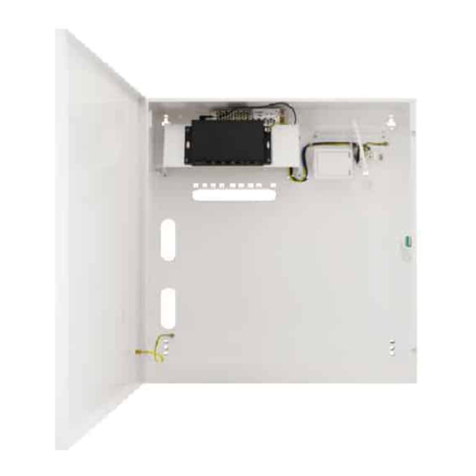
Pulsar
Pulsar S54-CR quick start guide
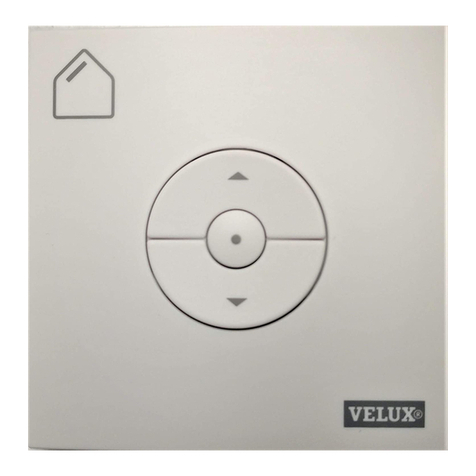
Velux
Velux INTEGRA KLI 310 instructions

DRUID
DRUID Debut HUB quick start

Penguin Computing
Penguin Computing Arctica 3200xlp Series installation guide
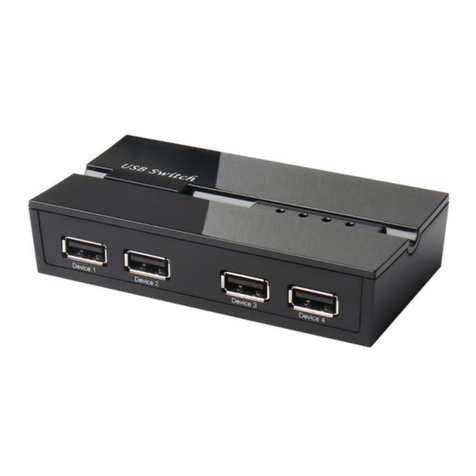
Chipset Communication
Chipset Communication USB-DS22H Quick installation guide
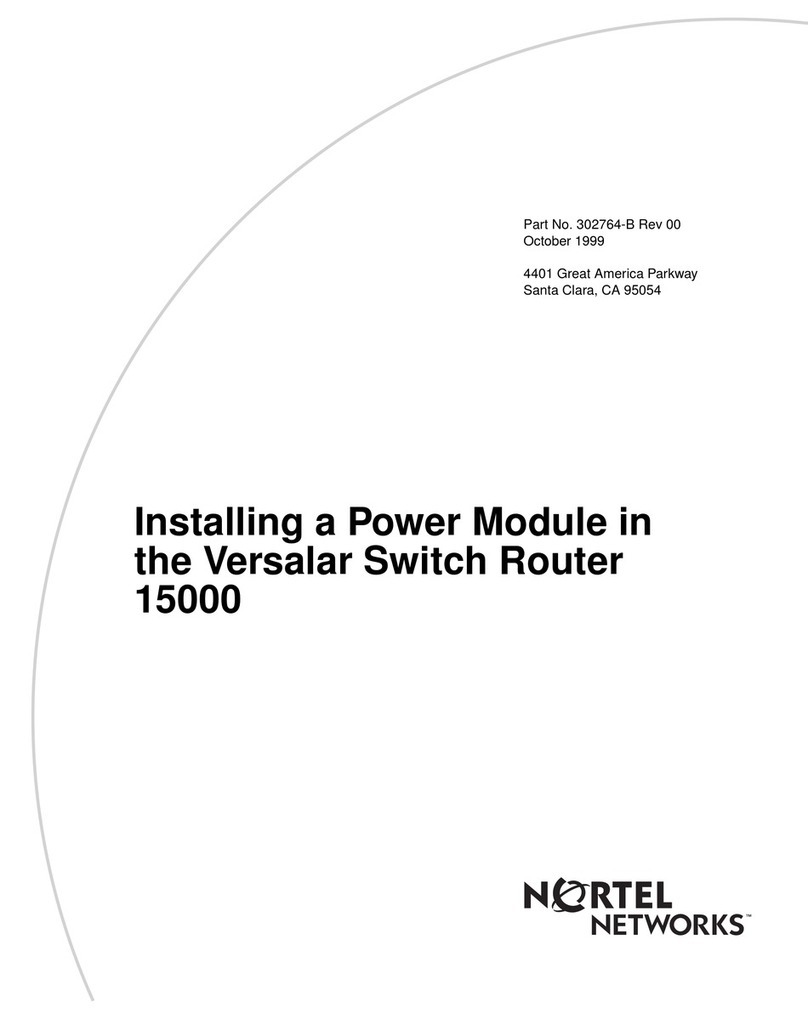
Nortel
Nortel Versalar 15000 Module guide




